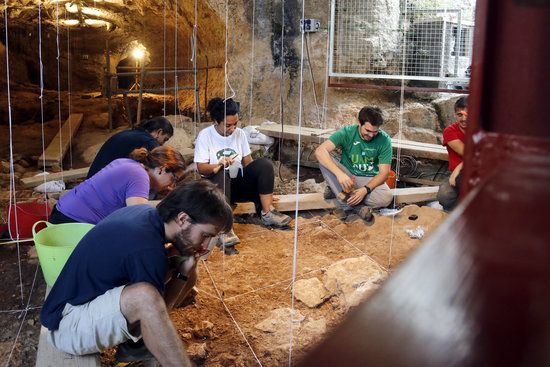Digging at Toll de Moià caves resumes after year halted due to direct rule
Archaeologists return to cave system in Central Catalonia hoping to find more remains of cave bears and Neanderthals

Over a score of archaeologists this week went back to researching the Toll de Moià caves, in Central Catalonia, a year since the work was stopped due to the period of direct rule imposed from Madrid following the 2017 independence bid.
The year in which the work was halted meant very little material was gathered or research done, the head of the dig, Jordi Rosell, told the Catalan News Agency, but above all it was a year without any public finance for the project.
This year, work has restarted on the Teixoneres cave, with the archaeologists aiming to finish excavating the first level of the cave, where in 2016 the tooth of a Neanderthal child was discovered, dating back more than 50,000 years.
Meanwhile, in the Toll cave, the researchers are looking to recover more remains of a cave bear - it is one of the sites where the most cave bear remains have been found to date - in order to find out more about the animal's behavior.
Hopes of going back 100,000 years
Expectations are high for what might be found this year at the dig, as the archaeologists also aim to reach much older levels than they have done so far, in the hope of finding new remains over 100,000 years old.
They also hope to find more remains of the Neanderthal child whose tooth was found, and are expecting to find more remains of the Neanderthals who once used the cave, such as spearheads and what is left of the animals they ate.
"We have found an impressive range of ungulates, including red deer, horses, aurochs [a precursor of cows], mammoths, fallow deer, roe deer…," says Rosell. As well as Neanderthal hearths, "where they roasted their ribs."
This year's excavations will also include the presence of some 25 students from different parts of the world who are involved in their own research project.